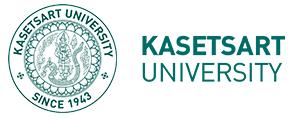[3.3] Organic Waste Treatment
Nowadays, the problem of the increasing amount of garbage; the inability to eliminate waste immediately throws some light on the causes and effects of waste pollution follow by environmental pollution. More than 50% of all solid waste is organic waste such as food waste, vegetables, fruits and weeds. The organic waste could be fermented and this option will turn a burden to a value. It can also help reduce problems in the waste management system and to reduce disposal costs as well as to reduce the amount of waste that needs to be landfilled.
3.3-1. Presently, Kasetsart University has been conducting research on the use of nature in Organic Waste Management. One of the guidelines is the introduction of Black Soldier Fly Larvae to help in the removal of organic waste at the source. Fly larvae also play an important role in the degradation of food waste, wet waste, manure, as well as debris. The removal of organic waste by fly larvae was more than 70% effective and the university also transferred knowledge to the community to apply for waste disposal in the vicinity of the campus. This research proves that fly larvae are neither carriers nor pests and no nuisance to the community. The organic waste that is degraded by the fly larvae can be used as fertilizer. This type of worm can help to quickly digest organic waste. It is a way to reduce environmental problems. Organic waste composting is rich in plant nutrients. The adult fly larvae are high in protein, fat, omega, dietary fiber, calcium, and high acid. It is suitable for animal feed as well.








[Figure 3.3-1] Removal of organic waste by fly larvae
3.3-2 Biogas and Liquid Fertilizer Project is an organic waste management project from the on-campus restaurants. It encourages learning and research resources for students and staff as well as practical applications for plant maintenance and soil maintenance. It is a project that can reduce the amount of organic waste such as debris, branches and leaves by landfill and used for soil maintenance for the trees on the campus.



[Figure 3.3-2] Gathering food waste to produce biogas and produce liquid fertilizer and to take care of the plants.
3.3-3 A project on compost in beautiful garden is a project that can help to reduce the amount of organic waste, fallen leaves and twigs by landfill and used for soil improvement in the campus.





[Figure 3.3-3]
3.3-4 Using weeders, weeds are excellent fresh manure and can be fermented as fertilizer and will add nutrients to the soil as well. When it is used in the fermentation process, methane gas that occurs can be used as a suitable alternative energy for cooking.



[Figure 3.3-4]
3.3-5 Composted cow manure fertilizer from two hundred cows raised on the university farm farms are collected daily at about 2,400 kilograms per day. In one month, we get about 72,000 kilograms of fresh manure or about 864,000 kilograms of fresh manure in one year. Compost made from livestock manure can produce fertilizer pellets. It can also be sold to other interested parties.





[Figure 3.3-5] Compost fertilizer production process from cow manure
3.3-6. The Production of liquid fertilizer from pig manure, the production of pig manure through the process and technology into high efficiency manure fertilizer to increase crop yields can add value to pig manure. The production of liquid fertilizer from pig manure per year amount 7 tons of dry pig manure can be processed into concentrated pig manure 12,000 liters (liquid fertilizer) sold to the community. When applied to the spray must be diluted before. If used in rice fields, 1.5 liters per rai / crop (8,000 rai). If used with cassava, 3.5 liters / rai / crop (3,400 rai). It definitely can reduce the use of chemical fertilizer.


.
[Figure 3.3-6] Soaking pig manure in water for 24 hours. After that, remove the waste from the fermentation tank.


Pig manure liquid fertilizer Pig manure after soaking It is processed into pellet / EM ball.
[Figure 3.3-6] Pig manure liquid fertilizer and pig manure waste after soaking.





[Figure 3.3-6] The pig manure liquid fertilizer turns into the product and distribute to the community and the province as well as providing for the community service projects to serve and make people smile
3.3-7 Kasetsart University has a large area of rice fields for research. The university buy rice paddy from the farmers before threshing, cleaning and packaging into the bag. Kasetsart University is also being the distribution center for the consumers to buy varieties of quality rice from the farmers directly. So the university has a rice mill under supervision. In the process, the paddy produces the residue, such as husk, straw, etc. The discarded portion represents 30 percent of the total grain process. The use of non-reusable parts especially the fertilizer is used again for testing rice cultivation.




[Figures 3.3-7]
